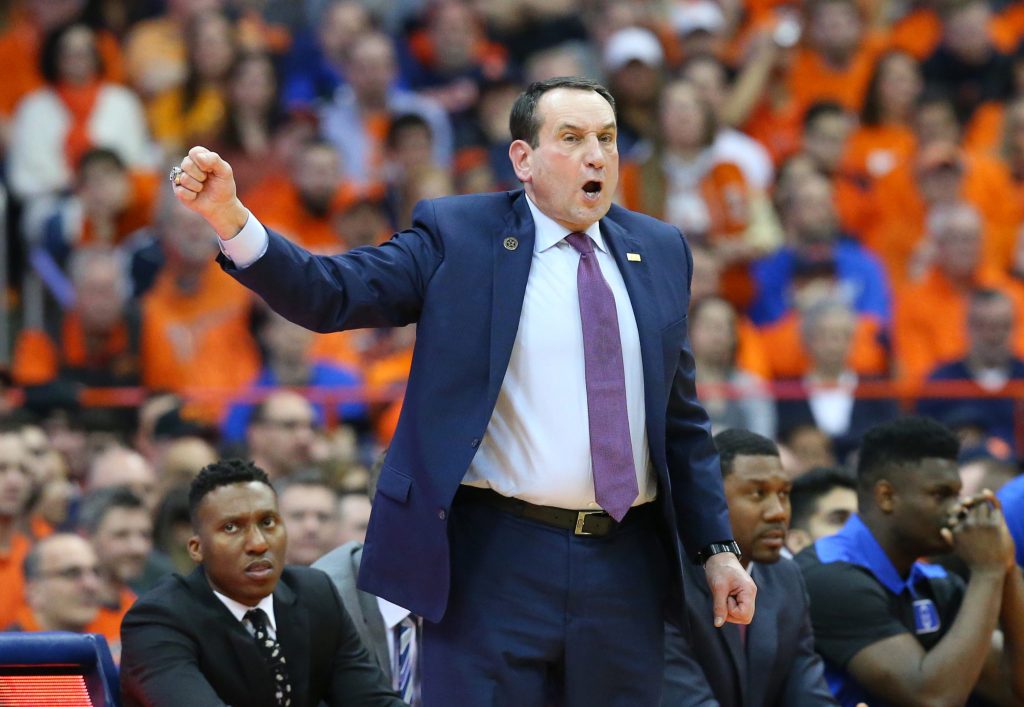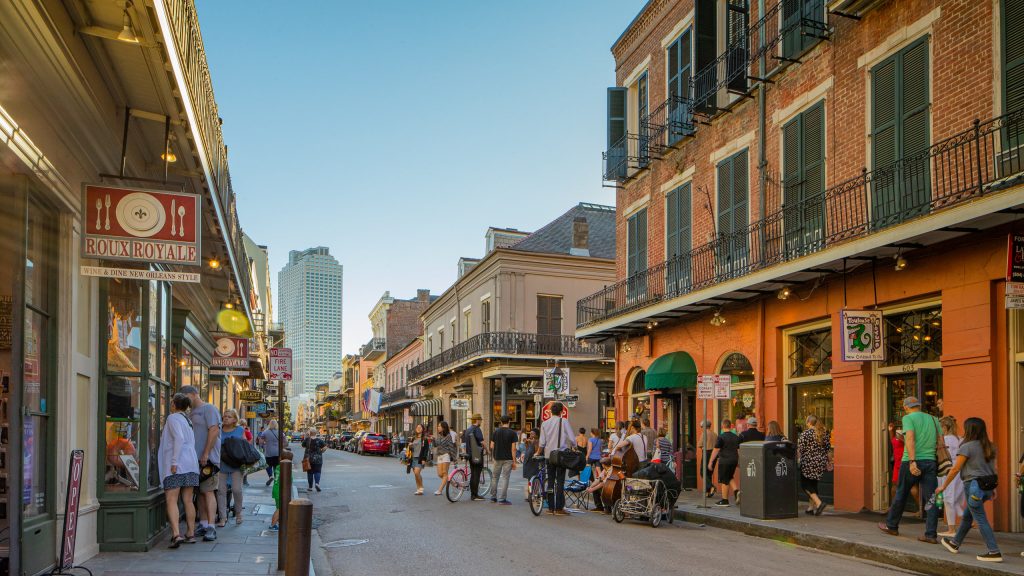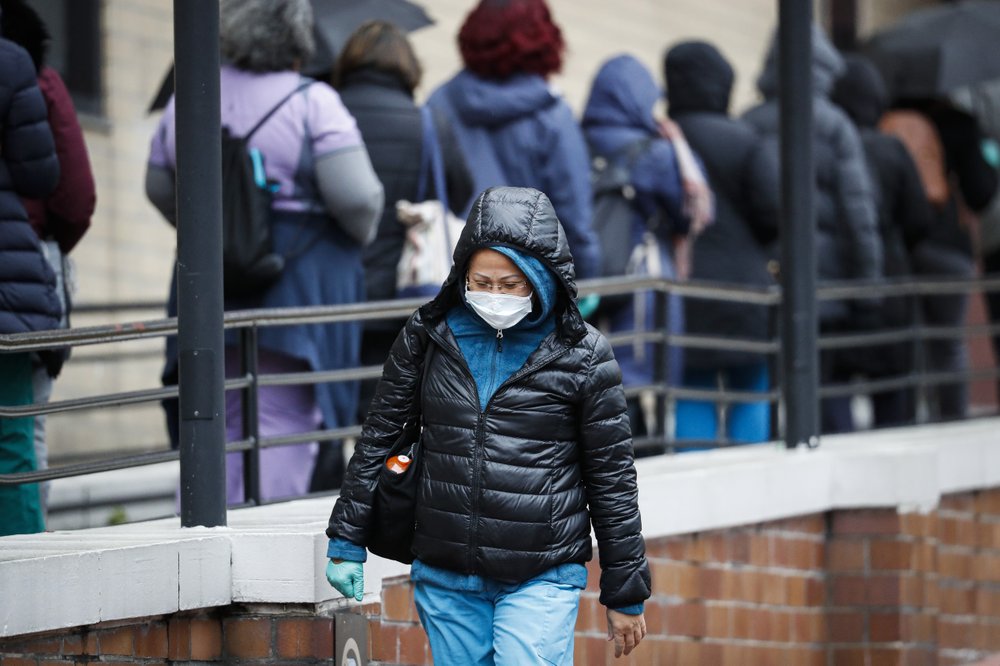In late February, as coronavirus infections mounted in Wuhan, China, local authorities went door-to-door for health checks – forcibly isolating every resident in makeshift hospitals and temporary quarantine shelters, even separating parents from young children who displayed symptoms of COVID-19, no matter how seemingly mild.
Caretakers at the city’s ubiquitous large apartment buildings were pressed into service as ad hoc security guards, monitoring the temperatures of all residents, deciding who could come in, and implementing inspections of delivered food and medicines.
Outside, drones hovered above streets, yelling at people to get inside and scolding them for not wearing face masks, while elsewhere in China facial-recognition software, linked to a mandatory phone app that color-coded people based on their contagion risk, decided who could enter shopping malls, subways, cafes and other public spaces.
“We couldn’t go outside under any circumstances. Not even if you have a pet,” said Wang Jingjun, 27, a graduate student who returned to Wuhan from the Chinese coastal province of Guangdong, which borders Hong Kong and Macau, in mid-January to live with her elderly mother and grandparents. “Those with dogs had to play with them inside and teach them to use the bathroom in a certain spot,” she said.
China’s zero contact: ‘It seems extreme. It works’
As the epicenter of the coronavirus pandemic has moved to the United States, Chinese officials and public health experts insist that even if President Donald Trump were to immediately adopt all the strict testing and lockdown measures that Western scientific advisers are advocating, these actions would still not be sufficient to stem the spread of a disease that is swiftly approaching a million worldwide cases.
More draconian steps are needed in the U.S., these officials say, although they also cast doubt on whether Americans could do what the Chinese did, for a mixture of reasons: political will and deep-rooted cultural inclinations, among them.
To help quell its outbreak, Beijing embarked on one of the largest mass mobilization efforts in history, closing all schools, forcing millions of people inside, quickly building more than a dozen vast temporary hospitals, deploying thousands of extra medical staff to Wuhan and the surrounding Hubei province, and meticulously testing and tracing anyone and everyone who may have encountered the virus.
But it did a lot more than that.
“Lockdowns, bans on gatherings, basic quarantines, testing, hand-washing, this is not enough,” Huiyao Wang, a senior adviser to China’s government, told USA TODAY in a phone interview from Beijing. “You need to isolate people on an enormous scale, in stadiums, big exhibition halls, wherever you can. It seems extreme. It works,” he said.
“‘No one left behind’ was the slogan in Wuhan,” he said. “No one.”
In the U.S., Trump has urged Americans to avoid gatherings of 10 or more people and suggested the worst-affected states should shutter schools, bars and restaurants.
But overall, he has largely left it to individual states and cities to decide whether to close businesses or explicitly order people to stay at home, despite evidence from countries in Asia, such as China, Singapore, South Korea and Taiwan, that aggressively limiting public gatherings and social interactions can help stop transmission of COVID-19, when done in combination with extensive testing and tracing of the disease.
Fact check:Can Trump use the Stafford Act to order a mandatory 2-week quarantine?
Trump has said he expects to see U.S. cases peak “around Easter,” although his claims about how quickly the U.S. can overcome the outbreak and bounce back appear to contradict assessments from top health officials, such as Anthony Fauci, the director of the National Institute of Allergy and Infectious Diseases.
Fact check: Study projects coronavirus peak, then moves the dates
With New York City the new locus of the outbreak, Trump announced on March 29 an extension of federal guidance on social-distancing measures through April and issued a “strong travel advisory” urging residents of New York, New Jersey and Connecticut to refrain from non-essential travel for 14 days to help limit the spread of the virus.
The U.S. Centers for Disease Control and Prevention said the new restrictions would help to slow the spread of the respiratory illness, which has now infected almost 190,000 Americans and killed more than 4,000. The daily death toll in the U.S. may not dip below 100 per day before June, according to a new study by the University of Washington.
China’s nationwide response vs. America’s patchwork
Wang, the Chinese government adviser, said the example of Wuhan, where authorities have now started lifting some of their stringent anti-virus controls that kept tens of millions of people at home for two months, illustrates that the U.S. and West more generally need to start taking far more radical virus-dampening actions that many people outside China might find culturally, logistically and emotionally unpalatable.
“It was not just families being isolated together in Wuhan, but individuals being isolated away from their friends and families,” said Andy Mok, a fellow at the Center for China and Globalization, a public policy think tank based in Beijing.
“China’s response to the outbreak was truly a nationwide response: systematic, comprehensive and coordinated,” he said. “This is why China was able to ‘flatten the curve’ so dramatically,” he added, referring to social isolation measures aimed at keeping the number of new coronavirus infections at a manageable level for hospitals and medical workers who would otherwise be overwhelmed with sick patients.
Poorest will suffer: Safety-net health clinics cut services amid coronavirus epidemic
Mok said that even in Beijing, about 750 miles north of Wuhan, new coronavirus rules were established requiring residents to have a formal pass to get in and out of their apartment buildings and homes. At the outbreak’s height in Wuhan, nobody was allowed in or out of the city and access to food stores was limited to once every few days.
Video footage published by the Australian Broadcasting Corporation, the country’s state-funded broadcaster, showed Chinese authorities in Wuhan welding doors to entire apartment buildings – with residents inside – shut to enforce quarantines. The footage, collected from Chinese social media users, could not be verified by USA TODAY.
Mok questioned whether Americans, raised on a diet of individualism and civil liberties that has informed every aspect of life from travel to economic institutions, would be willing to abide by invasive virus-detection and containment methods that require a strong commitment to “collectivism” and abridged freedoms.
Global action: Great Recession showed nations can’t fight coronavirus crisis alone
Europe has adopted some, but not all, of China’s most restrictive steps. In France, for example, residents must fill out of a signed attestation to justify leaving their homes or apartments. Police are handing out large fines for anyone who doesn’t follow the rules.
“It’s a very clever form of social engineering for civic purposes: it forces you to think about and justify to yourself as well as to the world why you are leaving the house,” said Sarah Maza, a French history professor and U.S. citizen living in France for the year.
Yang Junchao, a member of a Chinese delegation of COVID-19 doctors and medical experts assisting Italy’s efforts at halting its coronavirus infections – the worst in Europe – said its epidemic will be controlled “as long as the Italian public cooperates.”
Still, some American public health officials have acknowledged that in order to bring the virus under control – outside of a vaccine breakthrough – actions that overstep the bounds of what most Americans would be comfortable with, such as mass quarantines and other severe restrictions on movement, may be necessary.
“The approach we should be taking right now is one that most people would find to be too drastic because otherwise, it is not drastic enough,” said Francis Collins, the director of the National Institutes of Health, in a recent USA TODAY interview.
“It may be a country like China has a more top-down ability to insist on certain behavior changes. But we ought to be able to do it in our way, in a bottom-up fashion,” he said.
‘Widespread discontent and dissatisfaction’ in China?
While China’s official figures show that transmission of the coronavirus has all but ended in most of the country’s regions, unverified reports and online photos have begun to circulate suggesting that China’s death toll, most of them in Wuhan, could be far higher than the 3,312 figure published by China’s National Health Commission.
The Beijing-based Caixin newspaper reported on March 27 significantly elevated official cremation rates in Wuhan, possibly indicating a more substantial death figure, though the report acknowledges the increases were inconclusive. It is also not clear how extensively China has been counting asymptomatic cases, though it is tracking them.
Trump administration officials have repeatedly condemned China’s initial suppression of warnings about the outbreak and questioned the accuracy of Beijing’s infection figures.
Trump: Impeachment ‘probably’ distracted him from fighting coronavirus
China’s central government meanwhile has dismissed persistent allegations that it’s been trying to downplay the severity of infections, although it has not denied initially detaining whistleblowing doctors and citizen journalists in December who tried to speak out about a mysterious virus in Wuhan. China’s National Health Commission said Tuesday it will start including asymptomatic coronavirus carriers in its daily figures.
As of April 1, China recorded fewer than half – about 82,000 – the number of U.S. coronavirus cases. However, it appears to be bracing for a potential second-wave of infections and over the last few days China has had to re-close some public spaces and businesses, such as movie theaters, amid spiking clusters of cases, mostly imported.
“The Chinese are trying to paint the narrative that the model they have pursued has been a huge success and that we are failing,” because of our mode of governance, said J. Stephen Morrison, director of the Global Health Policy Center at the Center for Strategic and International Affairs (CSIS), a Washington think tank, in a media briefing.
Morrison said that there’s significant evidence that the Chinese government’s handling of the crisis has sparked “widespread discontent and dissatisfaction,” pointing specifically to the case of Dr. Li Wenliang, who was detained when he first tried to alert other health care providers about the novel coronavirus. He later died from the virus.
Concern has also grown over the whereabouts of Ai Fen, the head of Emergency at Wuhan Central Hospital. She is the doctor who first alerted the late Wenliang about the spread of the deadly virus. An Australian investigation team who interviewed Fen last week said she has disappeared, possibly detained by the Chinese government.
Chinese doctor censured: His crime? Warning about the novel coronavirus
And Heather Conley, the director of the Europe program at CSIS, said that while the response in democratic countries like the U.S. may look chaotic, there’s strength in that approach. “You have neighbors helping neighbors, and you have states making decisions. Sometimes it’s the federal level having to catch up with those decisions, and that’s a much more dynamic, nimble and resilient response,” she said.
PPE: Types of personal protective equipment used to combat COVID-19
Jan Renders, 29, a graduate student who was studying Chinese politics at Central China Normal University in Wuhan and airlifted out on Feb. 1 to his home in Belgium, said that the Chinese response was “too harsh” and lacked transparency.
“In Wuhan, when everything went into lockdown nobody could come or go and that included patients. The hospitals were overloaded and I’m sure people died because they couldn’t be transported to other hospitals, where there was room,” he said, noting that German hospitals have started taking coronavirus patients from overcrowded hospitals in Italy, where more than 12,400 people have died of COVID-19, the most anywhere.
COVID-19: These countries are doing the best and worst jobs fighting coronavirus
Yet Edward Tse, the Hong Kong-based founder of the Gao Feng Advisory Company, a management consultancy with roots in mainland China, said that his perception is that, on the whole, most people in China supported the government’s tough measures, including systematically isolating and quarantining carriers of the virus, even if they were from the same family or had a very mild or only suspected coronavirus infection.
“Isolation is the key,” he said. “It just depends on how you do it. The Chinese government decided to do it in a certain way. It turned out to be quite effective.”
A British video blogger posted a video on China’s Twitter-like Weibo platform last week that explained how China implemented the softer side of its policy of “ling jiechu,” which translates as “zero contact.” It allowed neighborhood committees to take charge of arrangements for shopping and deliveries. Highways were made toll-free, with no limits to the number of cars on a road, previously not the case. For those without a car, customized bus routes were set up, operated according to demand, and with tickets purchased on a smartphone app and capacity set at 50%. Many restaurants installed basic, but effective pulley systems to maintain employee-customer distance.
Wang, the student who returned to Wuhan from Guangdong to live with her elderly relatives, said many people in China “have the idea, and maybe it’s a stereotype, that medical care” in the U.S. and Europe is more advanced than in China.
“I am worried about places like New York City and Milan,” she said. “I don’t know why the deaths are so much higher there. I hope they will be strong and keep calm.”






